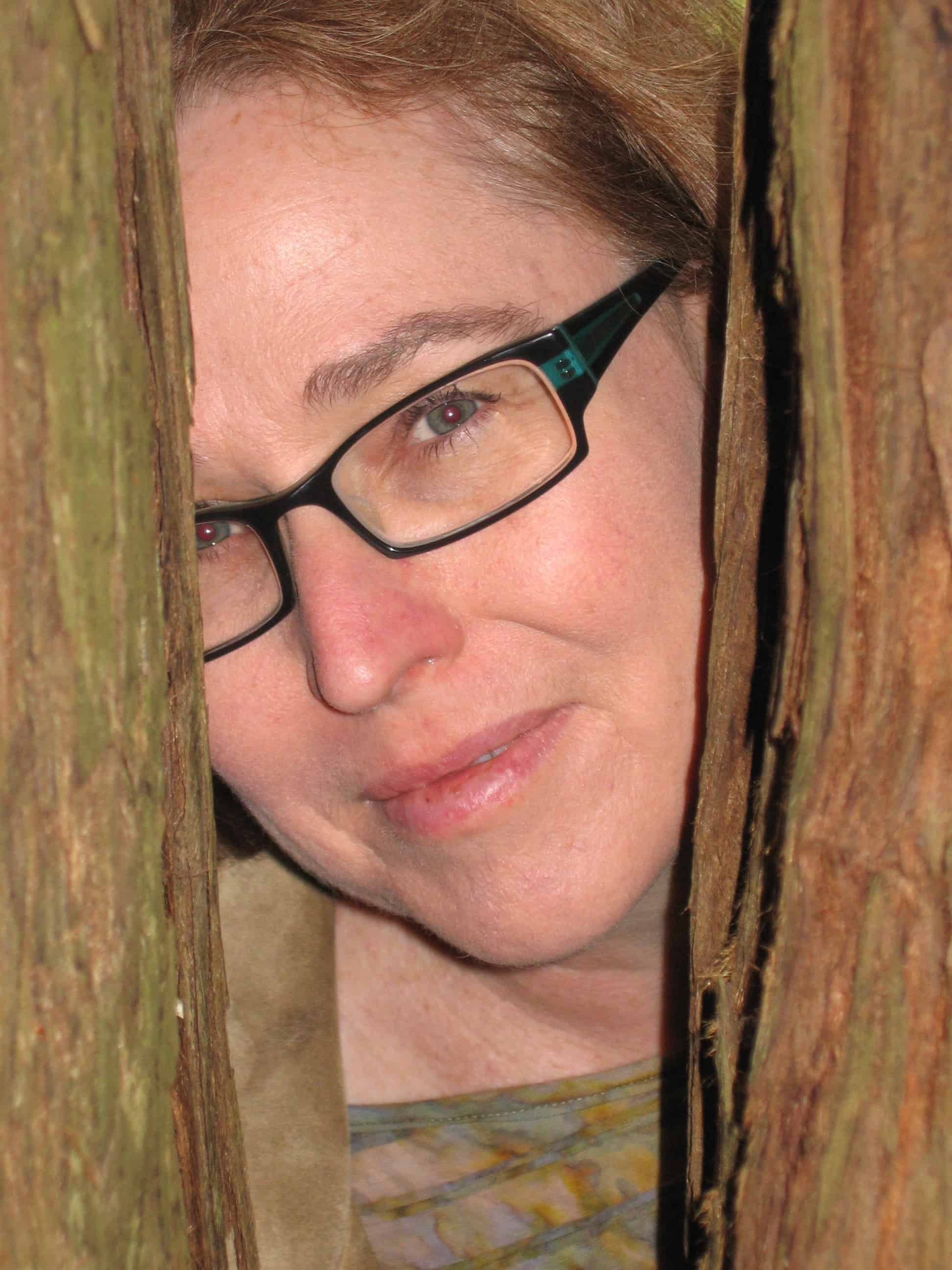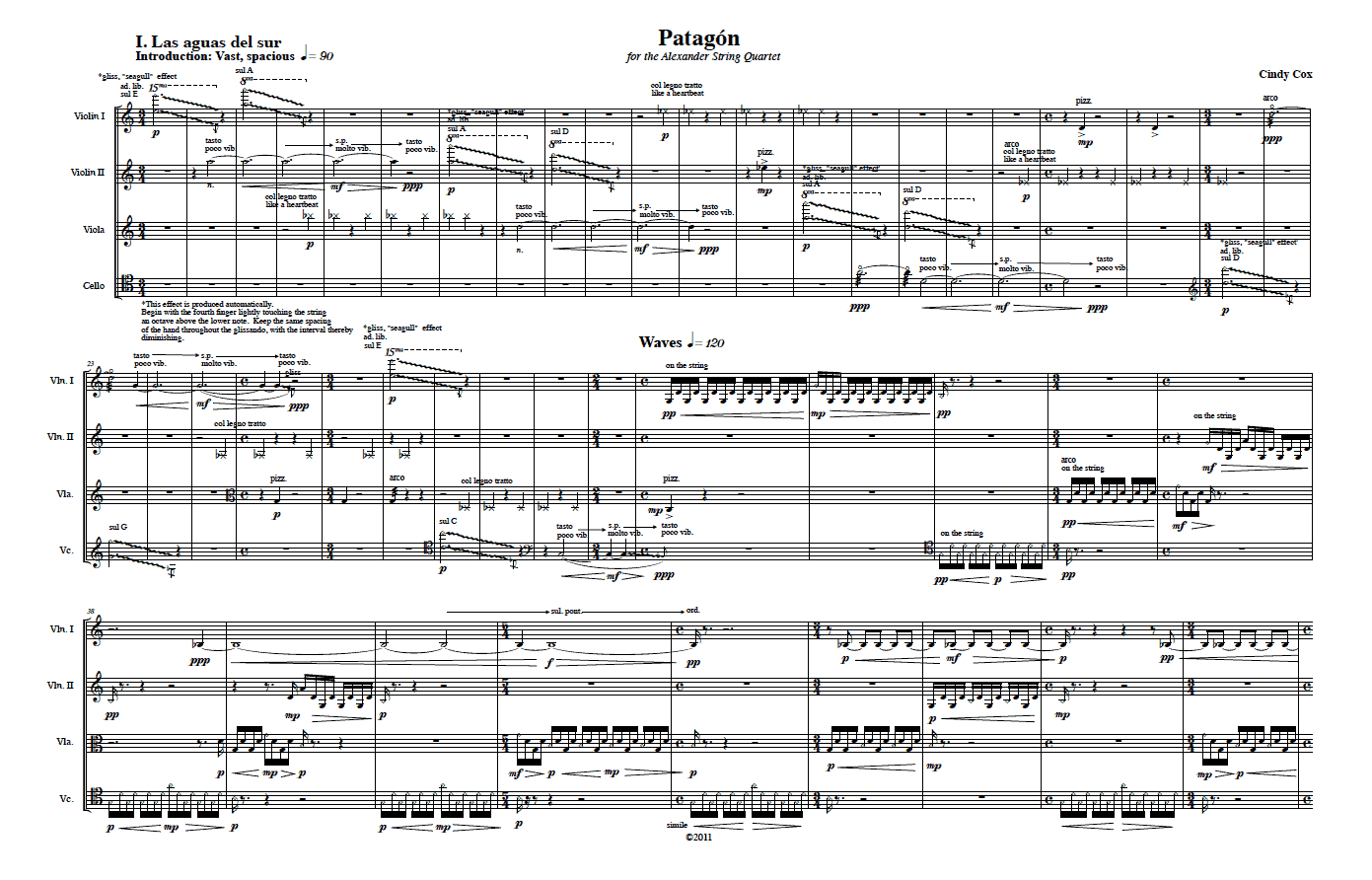 Tomorrow will be an exciting day for me — I’ll get my first chance to hear my new string quartet, Patagón, premiered by the Alexander String Quartet. The quartet and I go way back — they performed and recorded my first quartet, Columba aspexit, sixteen years ago — hard for me to believe! We had a great experience working together on that, so much so that they came back to me for another piece, this time to celebrate their thirtieth anniversary season this year.
Tomorrow will be an exciting day for me — I’ll get my first chance to hear my new string quartet, Patagón, premiered by the Alexander String Quartet. The quartet and I go way back — they performed and recorded my first quartet, Columba aspexit, sixteen years ago — hard for me to believe! We had a great experience working together on that, so much so that they came back to me for another piece, this time to celebrate their thirtieth anniversary season this year.
I’ve worked very hard composing Patagón; it took about six months, and I finished it last September. The title comes from the ancient, archaic name for the land of Patagonia. My newer compositions increasingly link to nature and landscape, and this latest string quartet evokes the idea of the far away, the other-worldly, and the remote. Last year I spent a sabbatical leave from my teaching job at UC Berkeley traveling to South America, and particularly inspiring was a trip to the Valdes peninsula, a large nature reserve in the southern region of Argentina. The strangeness of the terrain, the beauty of the sea, the whales, the penguins—well, it was an amazing experience that will stay with me the rest of my life.
In Patagón I try to elicit as many colors as possible, by using many different playing techniques—especially techniques involving bowing and harmonics. In the beginning you will hear an odd effect that string players call the “seagull”; it involves playing an artificially produced harmonic (by touching the string above a fingered note) while simultaneously gliding down the string—a very beautiful and eerie sound that does indeed evoke seagulls. Also in the opening is a gesture played with the wood of the bow (called “col legno”); it is a kind of “heartbeat” idea that is featured throughout all the movements.
Very prominent in the piece are the use of harmonics, where the player touches the string at a node that produces pitches that follow the overtone series. Other special techniques include playing near the bridge of the instrument, for a very glassy sound (“sul ponticello”), playing on the fingerboard for a very white, subdued quality (“sul tasto”), and pressing the bow very hard against the strings while bowing slowly (“overbowing”) —this last effect produces a harsh, crunchy sound that is sometimes difficult for the player to control. The third movement in particular was inspired by a couple of special days I spent with my family seeing the southern right whales (huge creatures that came right up next to our boat!) and visiting an enormous penguin colony—over half a million—at Punta Tombo, which my eleven year old daughter particularly enjoyed.
This is a large-scale piece for me, about twenty-five minutes in length. It has been a privilege to work with these wonderful musicians and see the colors of the quartet come alive. Can’t wait until tomorrow!
— Cindy Cox
www.cacox.com

